0 items
-
0 $
0
When ordering a men’s hair system, it’s essential to consider key details such as the toupee base, hair color, and hair density, along with a range of other customizable options.
At Ali Yehya, we simplify the process by providing comprehensive guidance on each choice, making it easy to select the perfect fit for your needs.
BASE SIZE
(Unsure about the base size needed for your hair system? Our detailed guide will help you determine the right measurements for a perfect fit.)
Frontal Pieces
- Small sections designed to cover the front hairline or temples, ideal for minor thinning or to enhance volume in specific areas.
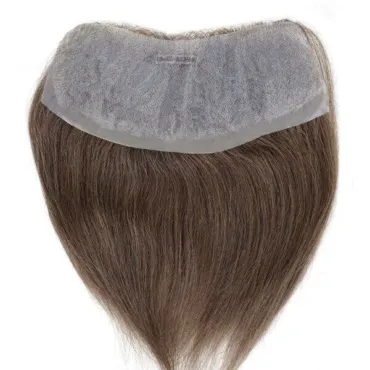
Partial Systems
- Mid-sized bases that cover moderate areas, such as the crown and top of the head, blending with existing hair. Great for those experiencing partial hair loss.

Full Cap Systems
- Full-coverage bases that encompass the entire scalp, suitable for advanced hair loss or complete baldness. Customizable for a seamless, natural look.
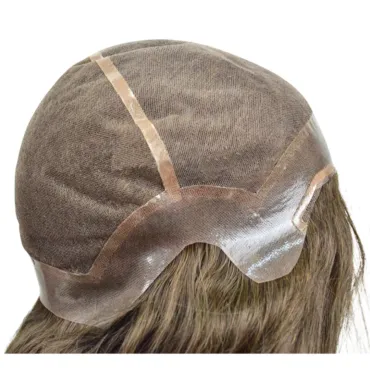
How to measure the size
Partial systems:
Length Measurement: Position the tape measure at the center of the front hairline and extend it straight back across the middle of the head to the desired endpoint.
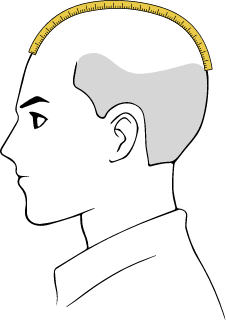
Width Measurement: Measure across your forehead from one temple to the other, and from ear to ear.
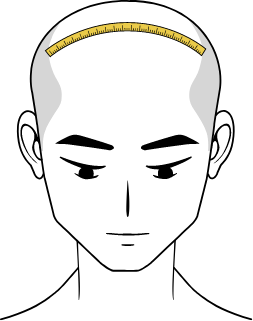
Full cap measurements:
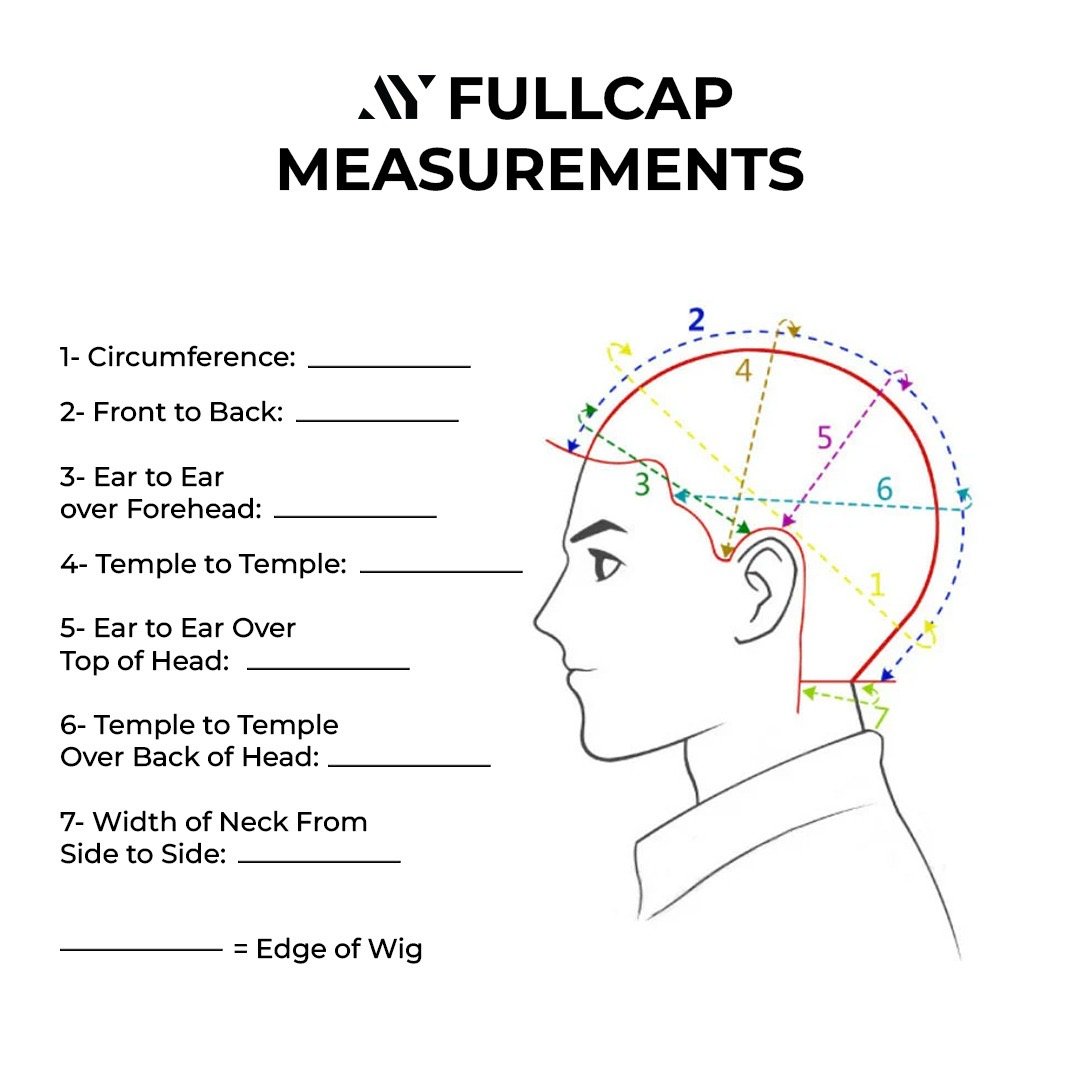
Step 1: Circumference
This measurement determines the distance around your head. Begin at the center of your front hairline, placing the tape flat against your head. Move the tape just above one ear, following the natural curve of your head towards the back. Keep the tape at the nape of your neck, then continue around to just above the opposite ear, and return to the center of the front hairline. This will give you the complete circumference measurement.
Step 2: Front to Nape
Place the tape at the center of your front hairline and measure directly across the top of your head, following the natural curve, all the way to the nape of your neck. This measurement captures the distance from the front to the back of your head.
Step 3: Ear to Ear Across Forehead
Place the tape at your temple, just in front of your ear. Measure from the hairline at the base of your sideburn, and then follow the natural curve of your forehead, moving across to the same point in front of the opposite ear. This measurement covers the distance from ear to ear across your forehead.
Step 4: Temple to Temple (Over Top of Head)
Place the tape at the bottom edge of the sideburn in front of one ear. Then, measure directly across the top of your head, following the natural curve, to the bottom edge of the opposite sideburn. This measurement captures the distance from temple to temple over the top of your head.
Step 5: Ear to Ear Over Top
Place the tape at the hairline edge at the top of one ear. Then, measure directly across the top of your head to the hairline edge at the top of the opposite ear. This measurement captures the distance from ear to ear over the top of your head.
Step 6: Temple to Temple Round Back
Place the tape at the front edge of your hairline (temple area). Then, follow the natural curve of your head, going around above the occipital bone, and continue to the opposite front edge of the hairline (the opposite temple area). This measurement covers the distance from temple to temple around the back of your head.
Step 7: Nape of Neck
This measurement captures the width of the hairline across the nape of the neck. Place the tape at the lowest point of the bone behind your ear (mastoid bone), then measure horizontally across the neck to the opposite mastoid bone. This will give you the width of the nape of the neck.
Helpful Tips for Accurate Measurements:
- Use a Cloth Measuring Tape: Ensure the tape is flexible for precise measurements.
- Maintain a Snug Fit: Hold the tape snugly against the head without pulling it tight.
- Keep the Tape Flat: Ensure the tape lies flat against the head, free from kinks or twists.
- Measure Multiple Times: Take the measurements at least three times to ensure consistency and accuracy. Proper measurements are crucial for a good fit.
BASE DESIGN
(There are several base designs to choose from, including Lace, Skin, Mono, or even a combination of these. Understanding the features of each will help you select the best option for your needs.)
Lace Base
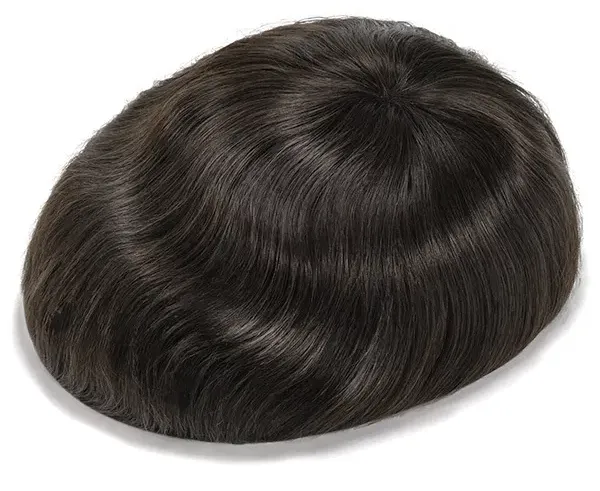
- Material: Made from a fine, breathable lace material.
- Advantages: Lightweight, breathable, and flexible. Ideal for those in hot climates or looking for a more natural look.
- Disadvantages: Less durable compared to other bases and can be more delicate.
Skin Base
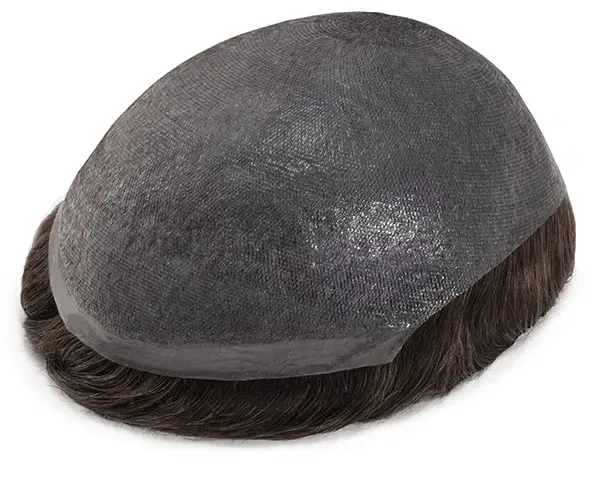
- Material: Made from polyurethane (PU), which mimics the appearance of a natural scalp.
- Advantages: Offers a realistic look with the scalp’s transparency. Durable and waterproof, providing good security and comfort.
- Disadvantages: Less breathable, which can cause heat buildup and discomfort in warmer weather.
Mono Base:
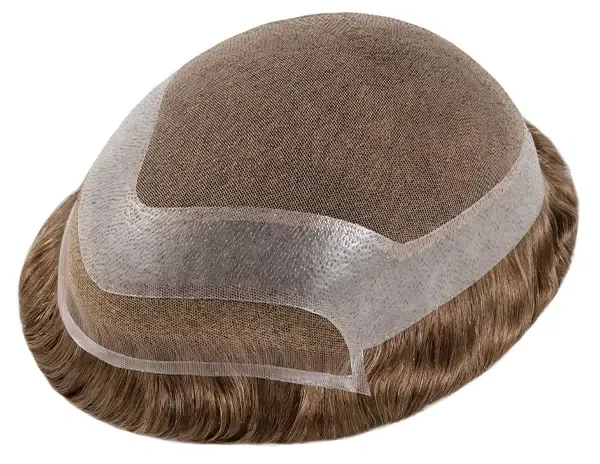
- Material: It uses a monofilament mesh that blends the benefits of both lace and skin bases. The mesh is often designed to allow hair to be styled in any direction, much like a lace base, while still offering durability and a natural scalp appearance, similar to a skin base.
- Advantages:
- Breathable like lace.
- Durable and secure like skin.
- Can be more comfortable and flexible.
- The monofilament allows for multidirectional styling.
HAIR LENGTH
(Hair length will be described in inches for you to find the perfect length hair system for you.)
Hair Length refers to the distance measured from the root to the tip of the hair. The price varies based on the length of the hair, with longer lengths generally costing more. If the hair length in your order exceeds 6 inches, the cost will be higher.
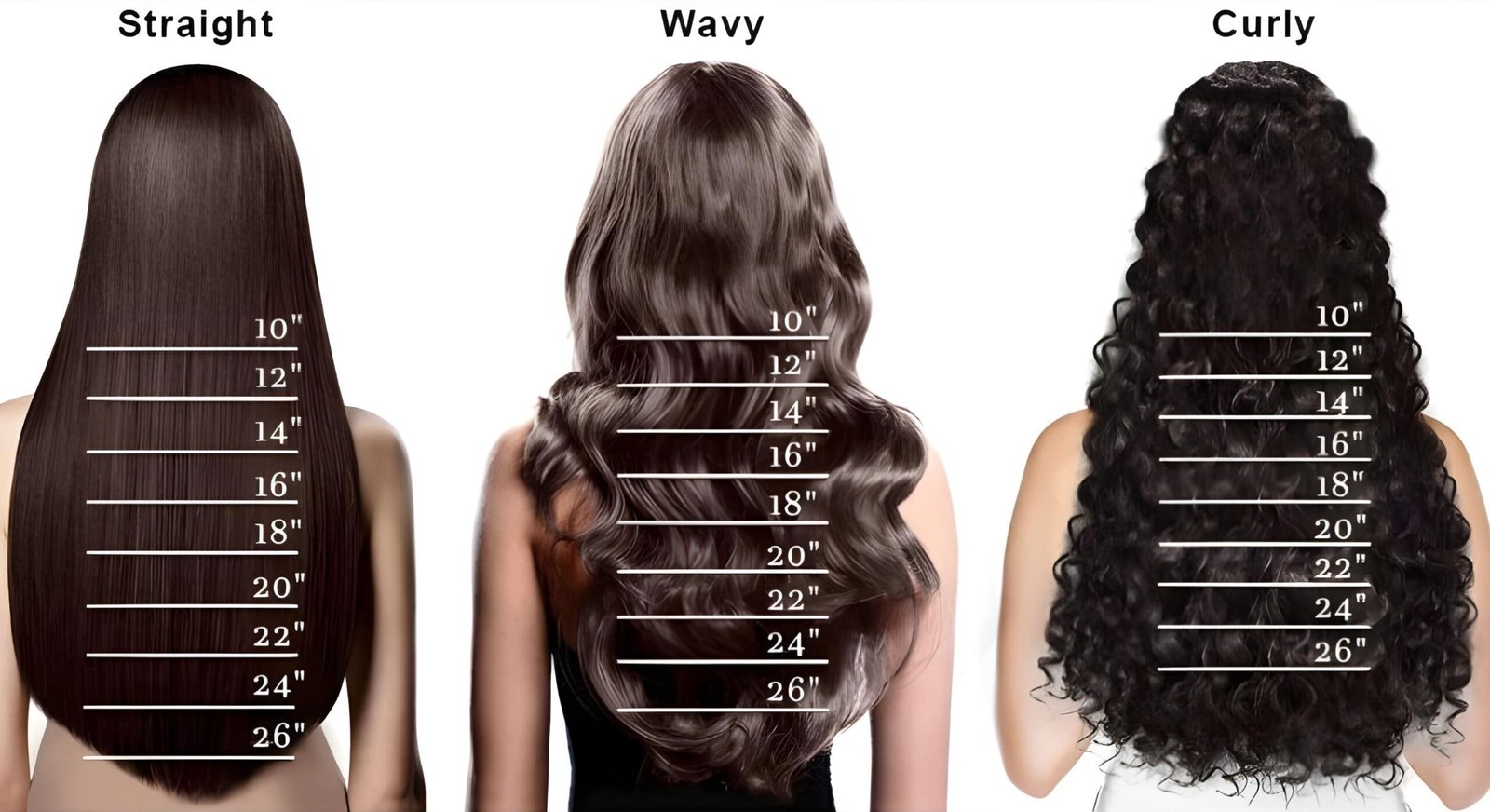
CURL & WAVE
(If you’re looking to style your hair system with more curl or wave, we offer a variety of options to help you achieve the perfect look. Explore the choices available to find the style that suits you best.)
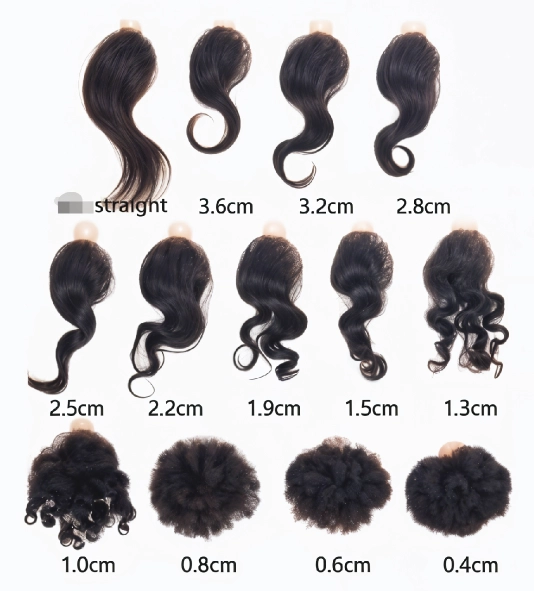
- Silky Straight
- Description: Absolutely straight, like a pencil. This is not ideal for most men’s styles, as it will stick out unless long enough to create weight for a natural lay.
- Natural Straight
- Description: Slightly less straight than silky straight. Perfect if you prefer straight hair with a more natural look, rather than a completely straight effect.
- Body Wave (3.2cm)
- Description: Opens to approximately a 3-inch wave. This light bend is not ideal for a brush-back style. When cut short, it appears very straight.
- Slight Wave (3.0cm)
- Description: Opens to approximately a 2-inch wave. Provides light movement or body. When cut to 2-1/2 inches or shorter, it looks almost straight. Any wave curl less than this will lack body.
- Medium Wave (2.5cm)
- Description: Opens to approximately a 1-3/4 inch wave. This light wave is commonly used for most styles. When cut shorter than 2 inches, only light movement remains.
- Tight Wave (2.0cm)
- Description: Opens to approximately a 1-1/2 inch wave. When cut shorter than 2 inches, most of the curl is removed. Can be styled as a wave or curl depending on drying method.
- Loose Curl (1.5cm)
- Description: Opens to approximately a 1-1/4 inch curl. If cut shorter than 2 inches, the curl is mostly removed. Can be styled into a wave or curl depending on how it’s dried.
- Tight Curl (1.3cm)
- Description: Opens to approximately a 3/4 inch curl, the size of your thumb. Can be a wave or curl depending on the drying method. Wet and scrunch for curl or comb for a flatter wave.
- Extra-Loose Afro (0.8 cm)
- Description: Opens to approximately a 3/5 inch curl, providing a fluffy, afro-style look.
- Loose Afro (0.6cm)
- Description: Opens to approximately a 1/2 inch curl, offering a softer afro look between extra-loose and medium afro curls.
- Medium Afro (0.4cm)
- Description: Opens to approximately a 1/4 inch curl, providing a slightly looser afro kink-curl effect. True to the rod size.
These options allow you to select the curl or wave that best suits your desired style.
HAIR DENSITY
(Hair density plays a crucial role in selecting the right hair system. Whether you’re looking for a thicker, more voluminous toupee or a thinner, more natural blend, understanding the options available will help you make the best choice. Here’s everything you need to know about hair density.)
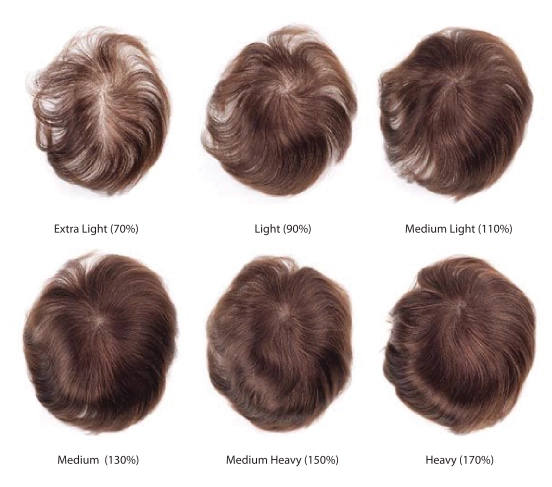
Why Hair Density is Important
Choosing the right density is crucial to achieving a hair system that looks natural. A poorly chosen density can make your hair system obvious and detectable, which defeats the purpose of a seamless, realistic look. An unnatural hair system, especially one with overly thick hair, can be easily spotted from a distance.
At Ali Yehya, we offer a range of densities to meet every need, allowing you to adjust the thickness of different areas of your hair system. This flexibility enables you to create a natural transitional density that mimics the look of naturally growing hair, ensuring a more authentic appearance. This is where we set ourselves apart.
Please review the following density options and choose the pattern that best suits your preferences.
Factors to Consider When Selecting the Correct Density
- Your Own Hair Density:
It’s essential to choose a density that matches your natural hair on the sides and back. This ensures a smooth blend between your existing hair and the hair system, creating a seamless look. - Age:
Younger individuals may opt for a thicker density (such as medium), as long as their natural hair density is similar. However, as we age, hair naturally tends to thin, so a lighter density will provide a more realistic and natural appearance.
HAIR COLOR
(color match for your hair system.)
Choosing the right color to match your existing hair is crucial for a seamless look. Here are the two most popular methods to match your hair color:
- Ali Yehya’s Color Chart:
Use our color chart to find the perfect match for your hair.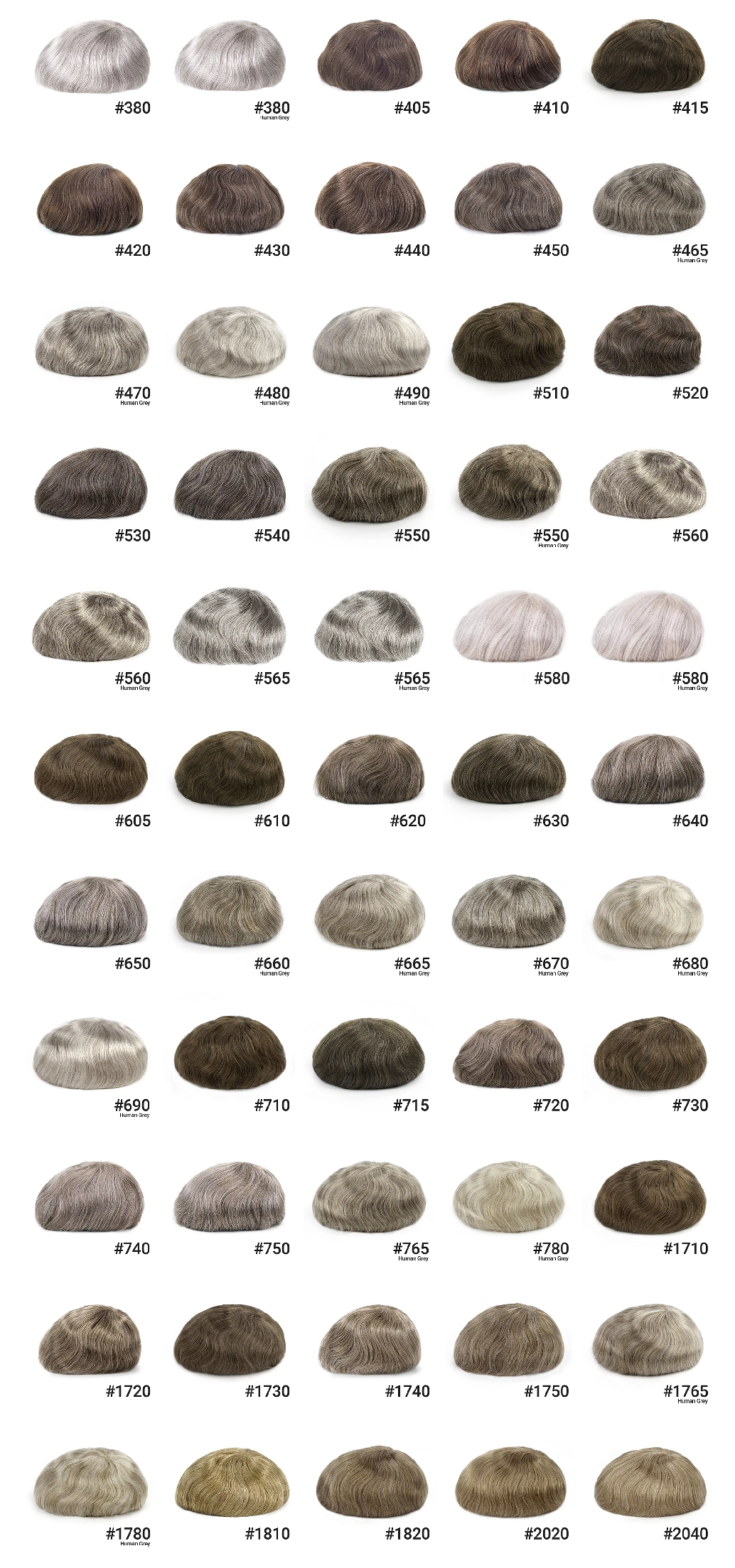
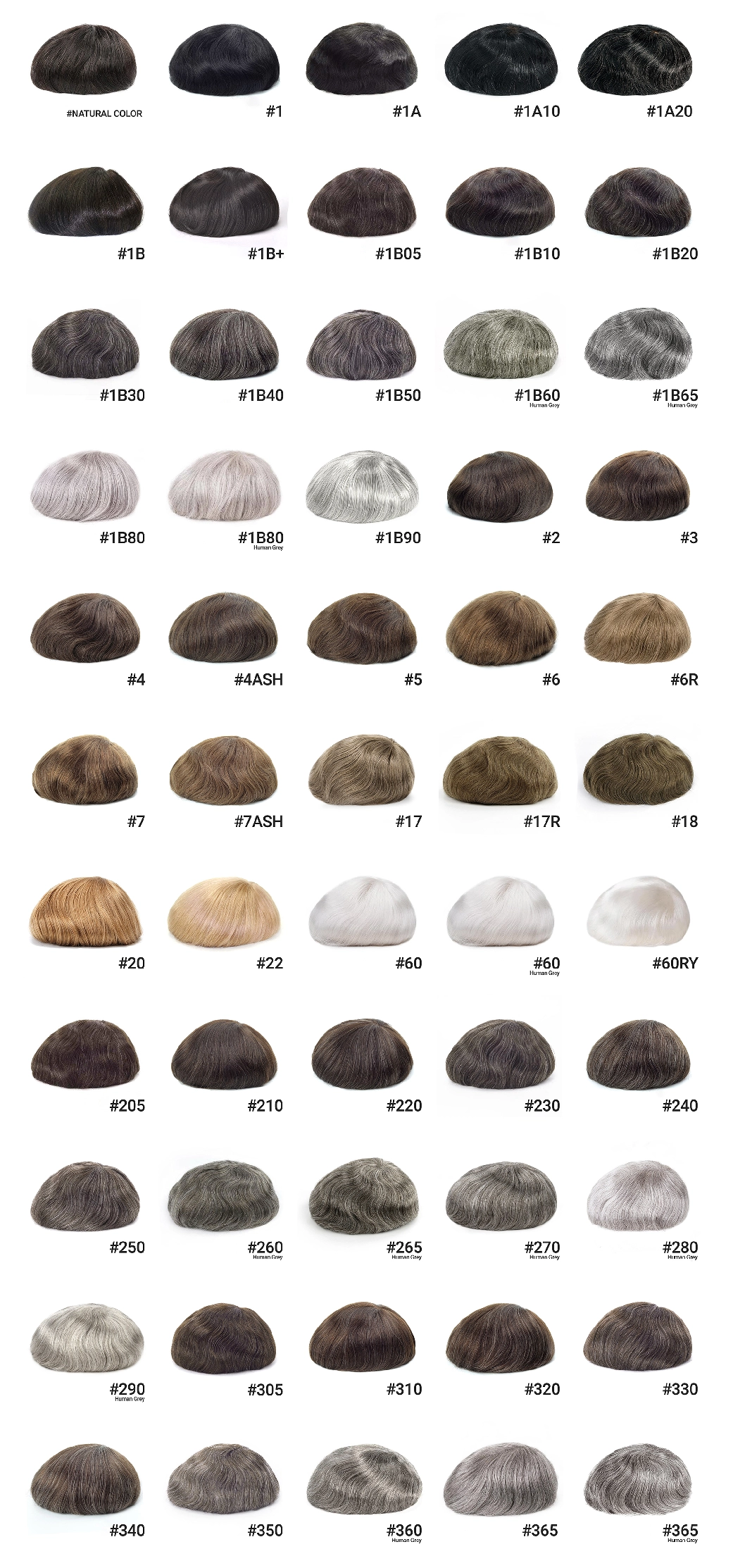
- Send Us Your Hair Color:
You can also send us a photo of your hair color via email or WhatsApp, and our team will assist you in selecting the best match for your hair system.
Highlights and Root Color
(You can also customize your hair system by changing the root color or adding highlights to achieve the perfect look.)
What are Highlights?
Highlights are strands of color woven into your hair that are lighter than your natural hair color. This option is ideal if you’re looking to add brightness to your hair and achieve a more vibrant, stylish appearance!
What is Root Color?
Root color is typically a shade or two darker than the rest of your hair, creating a natural “grown-out” look. It is applied at the root of your hair and extends a few inches into the strands, allowing the ends to remain brighter and lighter for a more blended, natural effect.


